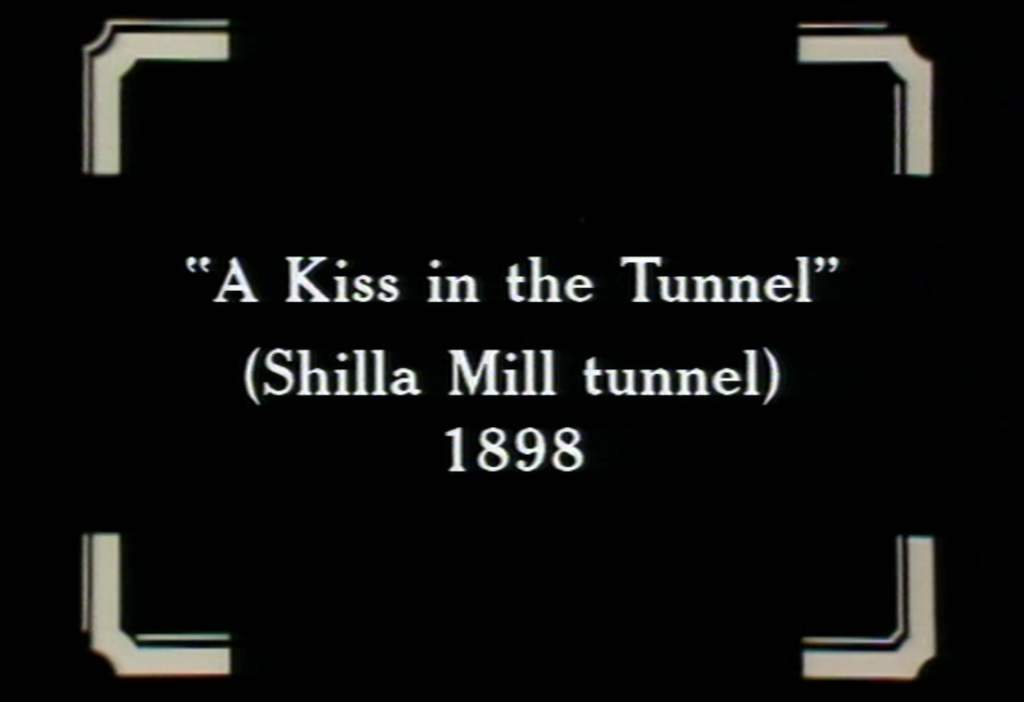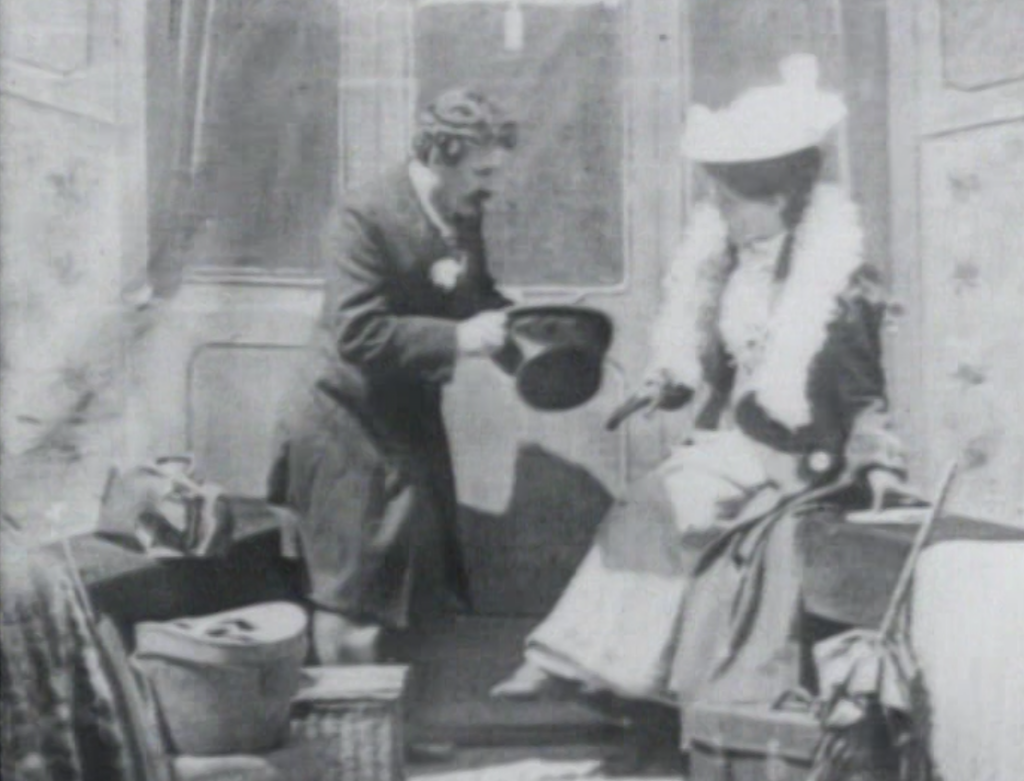
GB
1898
1min
Dir: George Albert Smith
Starring: George Albert Smith and Laura Bayley
A young man kisses a girl on a train journey
One of the very first surviving story films to feature a railway element A Kiss in the Tunnel is a short silent comedy film, produced and directed by George Albert Smith, showing a couple sharing a brief kiss as their train passes through a tunnel, which is said to mark the beginnings of narrative editing. The director, according to Michael Brooke of BFI Screenonline, ‘felt that some extra spice was called for’ in the then-popular ‘phantom ride’ genre, which featured shots taken from the front of a moving train, ‘and devised a shot showing a brief, almost furtive moment of passion between two passengers, taking advantage of the brief onset of darkness’. Just this middle shot was offered by The Warwick Trading Company to exhibitors who were advised ‘to splice it into train footage’, such as Cecil Hepworth’s View from an Engine Front – Train Leaving Tunnel (1899), ‘that they almost certainly would own from previous programmes’. This insertion of a single shot into another film indicates, according to film historian Frank Gray, ‘a new understanding of continuity film editing’ which ‘would have a profound impact on the development of editing strategies and become a dominant practice’. ‘Phantom rides’ or ‘panoramas’ were an early genre of film popular in Britain and the US at the end of the 19th century. There were a good number produced but they don’t really fall into the category of this A-Z of feature films, mainly due to their lack of character actors and story, being no more than ‘rolling pictures’, but their historic value is worth recording here. Screenings of The Haverstraw Tunnel (1897) in London in October of that year proved to be an instant success with a reviewer in The Era writing that, ‘A more exciting and sensational piece of realism has never been presented to an audience’. Starting the following year, Mutoscope’s British subsidiary filmed and released their own phantom rides, including Conway Castle – Panoramic View of Conway on the L. & N.W. Railway (1898) and Through Chee Tor Tunnel in Derbyshire – Midland Railway, as did rival companies such as the Warwick Trading Company. The phantom ride genre contributed to the emergence of longer film as distributors grouped their films together to form single journeys, such as the Warwick Trading Company’s View from an Engine Front – Through Mortehoe (1898) and View from an Engine Front – Ilfracombe Incline (1898) which were made available together as a single continuous length of film. Concurrent technological developments resulted in the Warwick Trading Company’s 12-minute epic Dalmeny to Dunfermline, Scotland, via the Firth of Forth Bridge (1899), billed as ‘the longest, most picturesque and interesting Cinematograph film ever produced’. This was of course an early driver’s eye view. George Albert Smith’s The Kiss in the Tunnel (1898) was a single shot of a couple sharing a brief kiss as their train passes through a tunnel, that was produced to be spliced into existing ‘phantom ride’ footage. Regarding the film itself, BFI Screenonline reviewer Michael Brooke points out that ‘the lighting here is totally unrealistic, we can see everything that’s going on and no attempt has been made at realism in the setting’. The carriage interior was in fact filmed outside Smith’s property in St Ann’s Wells Gardens in Hove, in natural sunlight, using a very crudely painted backdrop. The ‘floor’ was decorated with various props: luggage, parasols and so on, though the camera has been made to sway slightly from side to side to create the illusion of movement. This highlights the main problem with these type of ‘silent shorts’ in that their value lies more in their historical novelty rather than their entertainment. In this film, there is ‘phantom ride’ footage on the approach to Shillamill Tunnel (605 yards), located between Bere Alston and Tavistock North on the LSWR’s Okehampton-Plymouth ‘main line’. As we approach the tunnel, an LSWR 0-4-4T dashes past in the opposite direction on a passenger service. After the kiss takes place we emerge from the other end of the tunnel, and the film ends.


